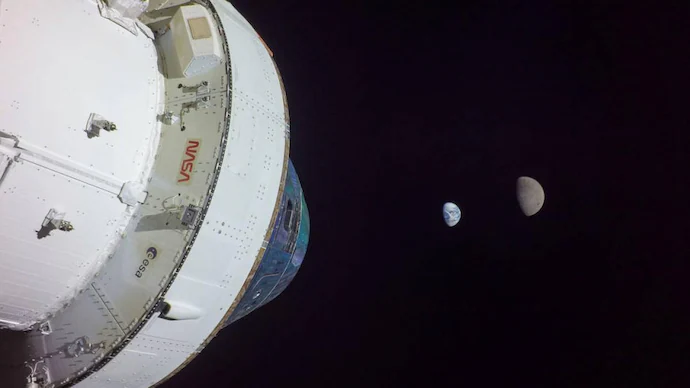
WASHINGTON, Dec 12 (NNN-AGENCIES) — NASA’s Orion space capsule splashed down safely in the Pacific on Sunday, completing the Artemis-1 mission — a more than 25-day journey around the Moon with an eye to returning humans there in coming years.
After hurtling through the Earth’s atmosphere at a speed of 40,000 kilometers per hour (25,000 mph), the uncrewed capsule floated down to the water with the help of three large red and white parachutes, as seen on NASA TV.
After a few hours of tests, the vessel will be recovered by a US Navy ship in waters off the Mexican island of Guadalupe.
The Orion voyage, which launched on NASA’s new mega Moon rocket from the Kennedy Space Center on Nov 16, kicked off Apollo’s successor programme, Artemis.
Named after Apollo’s mythological twin sister, the project aims to return astronauts to the lunar surface this decade and establish a sustainable base there as a stepping stone to future human exploration of Mars.
By coincidence, the capsule’s return on Sunday unfolded on the 50th anniversary of the Apollo 17 Moon landing of Gene Cernan and Harrison Schmitt on Dec 11, 1972.
They were the last of 12 NASA astronauts – all of them white men – to walk on the Moon during a total of six Apollo missions starting in 1969.
Re-entry marked the single most critical phase of Orion’s journey, testing whether its newly designed heat shield can withstand atmospheric friction and safely protect astronauts that would be on board.
“It is our priority-one objective,” NASA’s Artemis I mission manager Mike Sarafin said at a briefing last week. “There is no arc-jet or aerothermal facility here on Earth capable of replicating hypersonic re-entry with a heat shield of this size.”
While no one was on the $4bn test flight, NASA managers were thrilled to pull off the dress rehearsal, especially after so many years of flight delays and busted budgets.
Fuel leaks and hurricanes conspired for additional postponements in late summer and autumn.
The next Orion flight around the Moon is currently targeted for 2024. Four astronauts will make the trip. That will be followed by a two-person lunar landing as early as 2025.
The programme is scheduled to send a woman and a person of colour to the Moon for the first time.
Nujoud Merancy, chief of NASA’s exploration mission office in Houston, said putting people on the next flight will “ratchet up the xcitement”.
“No one’s been to the Moon in my lifetime, right?” she said. “So, this is the exploration that so many of us have been dreaming about.” — NNN-AGENCIES
